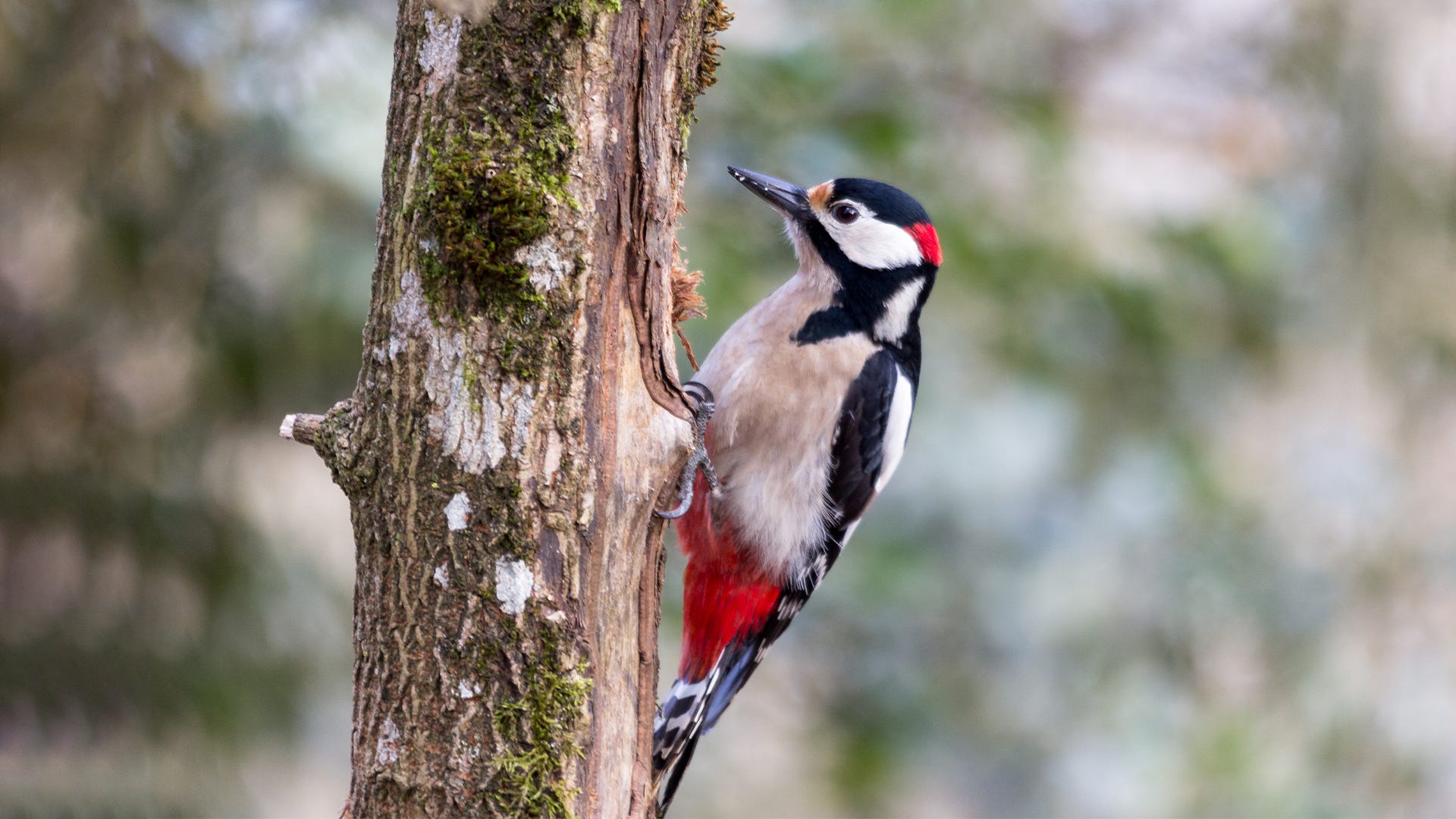Woodpeckers in Florida: Identification Tips and Environment Preferences
Woodpeckers in Florida: Identification Tips and Environment Preferences
Blog Article
Woodpeckers Unleashed: Checking Out the Wonders of These Proficient Tree Mountain Climbers
Woodpeckers, with their unique markings and balanced drumming resembling through wooded areas, hold an one-of-a-kind location in the avian world. Their specialized anatomy and adaptations enable them to navigate upright surface areas with unrivaled skill. Nevertheless, their proficiency of tree climbing is just one element of their interesting habits. As we look into the complex information of woodpeckers' nesting behaviors, feeding strategies, and the ongoing conservation efforts to safeguard these exceptional birds, a much deeper appreciation for their location in nature unfolds.
Composition and Adaptations
When taking a look at the anatomy and adjustments of woodpeckers, one can observe remarkable attributes that enable these birds to prosper in their specialized eco-friendly niche. Woodpeckers are geared up with a suite of one-of-a-kind physiological qualities that help them in their woodpecking habits. One of the most noticeable functions is their solid, chisel-like beak, which is specialized for boring right into wood to reveal pests or produce nesting cavities. This beak is supported by strong neck muscle mass and a highly developed head structure that serves as a shock absorber, enabling woodpeckers to repetitively peck at trees without causing brain injury. Furthermore, woodpeckers have zygodactyl feet, with two toes facing forward and 2 facing in reverse, providing a firm grasp on tree trunks while they look for food or drum for interaction.
Additionally, woodpeckers have a special tongue framework that is long, barbed, and sticky, allowing them to extract insects from gaps in wood. This customized adaptation enables woodpeckers to exploit a food source that is inaccessible to lots of various other bird types. In general, the makeup and adaptations of woodpeckers showcase the amazing transformative options that have actually permitted these birds to grow in their arboreal habitat.
Drumming Actions
Having checked out the makeup and adaptations of woodpeckers, the emphasis currently moves to recognizing their drumming actions, a distinctive element of their interaction and territorial displays. Drumming is an important type of communication amongst woodpeckers, serving several functions such as establishing areas, bring in friends, and signaling alarm system. Each woodpecker varieties has an unique drumming pattern that assists individuals acknowledge participants of their own species and identify them from competitors or predators.
Woodpeckers generate drumming audios by rapidly pecking on powerful surface areas such as dead trees, utility posts, and even metal things, creating a collection of balanced beats. The strength and speed of drumming can differ based upon the function; as an example, a quick drumming series may represent hostility in the direction of burglars, while a slower and softer drumming pattern can show courtship (Woodpeckers in Florida). In addition, woodpeckers might change the frequency and period of their drumming to share particular messages effectively
Nesting Habits
Checking out the nesting routines of woodpeckers reveals interesting insights into their reproductive actions and environment options. Woodpeckers are recognized for their distinct nesting choices, commonly digging deep into dental caries in trees to create protected spaces for increasing their young. These tooth cavities serve not just as a nesting site yet also as a protected haven from predators and severe climate.
Woodpeckers exhibit a high level of fidelity to their nesting websites, commonly going back to the very same location year after year. This actions highlights next the importance of appropriate environment accessibility for their reproductive success. The option of a nesting site is crucial for woodpeckers, with factors such as tree varieties, height, and degeneration stage playing significant functions in their decision-making process.
Surprisingly, some woodpecker species are recognized to dig deep into several cavities within their territory, offering themselves with alternate nesting choices. This technique may work as a form of insurance policy versus potential risks or disturbances to their primary nesting website.
/https://tf-cmsv2-smithsonianmag-media.s3.amazonaws.com/filer_public/30/ac/30acf469-09cd-4fcc-a812-1aa30f477578/aprmay2024_l09_woodpeckers.jpg)
Feeding Strategies
One of the most unique feeding behaviors of woodpeckers is drumming, which involves rapid pecking on trees to reveal insects beneath the bark. Woodpeckers are likewise known to excavate tooth cavities in trees to accessibility concealed insect larvae or sap. Some varieties, like the acorn woodpecker, store nuts in specially created openings called granaries.
Preservation Initiatives
In the middle of the detailed feeding methods exhibited by woodpeckers, the preservation efforts aimed at protecting these fascinating birds play a vital role in protecting their environments and populations. Woodpeckers face different dangers to their survival, consisting of environment loss as a result of logging, environment adjustment altering their communities, and crashes with synthetic frameworks such as structures and automobiles - Woodpeckers in Florida. Guardians are proactively functioning to attend to these difficulties and make certain the long-term well-being of woodpecker species

Education and public awareness campaigns are additionally crucial components of woodpecker preservation efforts. By elevating recognition about the significance of these birds in preserving healthy and balanced forest communities, guardians can garner assistance for environment preservation initiatives and promote liable land administration techniques. Via collaborative efforts between researchers, policymakers, and regional neighborhoods, we can function with each other to secure a future where woodpeckers flourish in their natural habitats.
Conclusion

Report this page